If I wanted a "real" standalone oscillator then something like Steven's Schmitt trigger gate (which I also mentioned in the monostable query) is a practical cheap and flexible electronic solution. You can use a pkg of 6 gates for lowest cost (as they are so common) or for minimum size use some of the tiny single gate packages. You could also use an opamp or comparator for the same purpose. A unijunction forms a relaxation oscillator with a very few parts. Neon and cap and resistor if getting desperate. Esaki / Tunnel diode and R !!! :-).
BUT if you want something smaller and cheaper and electronic that arguably satisfies the letter and spirit of you requirement even though it does not look like an oscillator in isolation, and that requires a single 0402 packaged 1 cent component then -
Software driven sawtooth oscillation cycle. Exponential charge of a capacitor using weak pullups, preceded by discharge of capacitor.
With care this gives minimal cost, minimal area, no power drain except when testing (and hardly then), no EMI etc when not in use.
PIC pin to Capacitor.
Cap other lead to ground.
Enable weak pullups.
Make pin output. Set low.
Set pin to input.
Measure time taken to go high as cap is charged by weak pullups.
Repeat several times if desired to check value.
Can be multicycle oscillator or single cycle.
Needs: One capacitor, relatively low value. Can be 0402 if desired (breathing hazard :-) ) Pin can even be used for other purposes if desired if cap not too large.
Weak pullups vary in current sourcing by ? 2:1 ratio. The above can be calibrated by adding one more cap on board with cap >> stray and pin capacitance. Cycling this cap tells you how strong the pullup is. Adding offboard cap in parallel increases charge time.
Similar can be done with an ADC pin.
ADC version has advantage of part charge cycle response.
By looking for the shape of the exponential charge curve you can tell how much capacitance is present in << 1 RC cycle.
An external pullup R can be added in each case if desired.

